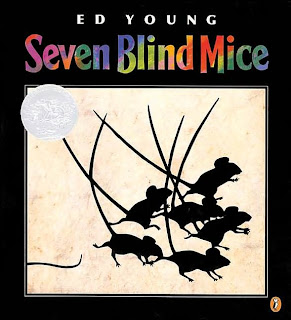Tops and Bottoms by Janet Stevens
Caldecott Honor/Traditional
This book is the story of a lazy bear and a hard-working hare. The bear owns lots of land, but is lazy and never works. The hare has a large family, but not enough food to feed them and no land to grow food on. The tricky hare makes a deal with the bear, saying that if he can use his land to grow food, the hare will give the bear either the tops or the bottoms of the vegetables. When the bear picks the tops, the hare grows food like carrots that have green inedible tops. Then, when the bear picks bottoms, he grows things like broccoli, so the bear again gets the worst part of the vegetables. The bear eventually gets frustrated and decides to grow his own vegetables, and the hare and his family sell the crops, buy the bear's land, and live happily ever after.
This book is great for a read aloud for many reasons. The book opens so that the pages are read from top to bottom rather than left to right (the most left side of the left page is the top of the page, and the most right part of the right page is the bottom). This is a very unique layout, and the book also has very vivid, detailed explanations, making it a good book to talk about illustrations, which is a standard in Common Core (RL.3.7). The book also has a good moral and would be great for talking about working hard in order to reach a goal.
Stevens, J. (1995). Tops and Bottoms. New York, NY: Harcourt Inc.




